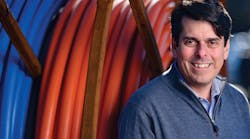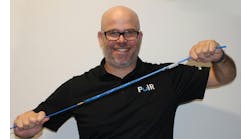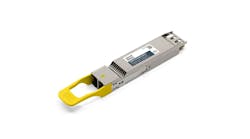Related to
Latest from Fiber Installation/Deployment
Fiber-to-the-Extension-Point (FTTep) Delivers Gigabit Alternative
Fiber-to-the-Home (FTTH) has become so popular that many policy makers, regulators, and service providers believe that FTTH is the only way to provide reliable gigabit Internet access. Broadband policy relying solely on FTTH is prolonging the digital divide, unnecessarily denying ultra-fast Internet service to areas that can be effectively served by the FTTep architecture and technologies specified in the Broadband Forum report TR-419 to economically provide gigabit Internet service by overcoming the barriers to FTTH.
Fiber construction for the last few hundred meters, near the customer premises, is often the most difficult. Beyond this point, the fiber serves only one, or very few customers, so there is little cost-sharing.
Thus far, the deployment of broadband fiber has addressed the areas where FTTH is most economically attractive, with high potential return on investment. Serving the remaining locations with fiber will, in many cases, require greater effort, cost, and complexity per location. (See Figure 1.) Many of the remaining, underserved locations could get gigabit-class access more quickly and at a much lower cost if served by FTTep, where fiber reaches close to the customer premises, but the last hundred meters are served with existing phone wire, coax cables or CAT5 wires.
Five FTTH Myths
While FTTH is a great solution for many areas, several myths can lead policy makers to conclusions that disserve people living in areas unsuited to FTTH:
Myth #1: Fiber all the way to the premises is the only way to deliver true broadband access. This is false. Gigabit service is the same whether it is carried by fiber or copper.
Myth #2: Higher bitrates provide a better customer experience. This may be true for up to about 500 Mb/s, but at higher rates, latency becomes more important. Wire-based technologies can provide sub-millisecond one-way latency.
Myth #3: Fiber is the only future-proof access technology. This is false. Copper and coax wires can deliver 2 Gb/s service today and new standards address rates up to 10 Gb/s.
Myth #4: Fiber provides higher quality service. This is certainly not true if you can’t get service at all. Broadband access via copper and coax provides good quality service.
Myth #5: With enough government incentives, fiber can reach everyone. As discussed below, it is impractical or exorbitantly expensive to serve some locations with fiber.
Fiber Barriers
In most places, fiber can be economically built from the nearest Central Office to a point near the customer’s premises. This is often the distribution point in the basement of a multiple dwelling unit or near the customer’s home. Up to this point, fiber cost is shared by many customers and the fiber construction takes place within established utility right-of-way land. Fiber construction for the last few hundred meters, near the customer premises, is often the most difficult. Beyond this point, the fiber serves only one, or very few customers, so there is little cost-sharing.
The reasons why some homes and businesses may not get fiber all the way to the premises include the following barriers:
- High cost per living unit due to low geographic density or low subscription.
- High cost to install fiber inside the building.
- High cost to restore landscaping or paving.
- High cost due to geological factors.
- Lack of civil works permission from local government.
- Inadequate funding for construction of new fiber cables.
- Inadequate construction crews or equipment.
- Lack of construction permission from landowner.
- Customer declines permission for technician to enter home or to drill holes in walls.
- Lack of permission from building owner to install fiber inside the building.
To a large degree, these barriers are avoided if the existing wires are used for the section near the customer. Over this short distance, more than a gigabit-per-second can be achieved.
Many of the remaining, underserved locations could get gigabit-class access more quickly and at a much lower cost if served by FTTep, where fiber reaches close to the customer premises, but the last hundred meters are served with existing phone wire, coax cables or CAT5 wires.
FTTH Alternative
BBF TR-419 describes the use of fiber from the network to an Optical to Electrical (O2E) device near the customer’s premises, where the optical signal is converted to electrical signals traversing over phone wires, CAT5 wires, or a coax cable. The O2E unit may serve a single living unit via a single cable, or the O2E may serve multiple living units via separate wires to each customer premises. In the latter case, the O2E could be a Distribution Point Unit (DPU).
FTTep’s lower cost enables the delivery of multi-gigabit service to more homes, millions of more homes. In addition to avoiding the cost and logistical barriers of installing new fiber inside the building and in the last section leading to the building, FTTep can avoid the cost and inconvenience of the network technician entering the premises. In many cases, the customer can self-install the necessary equipment. FTTep speeds the deployment of broadband service by avoiding the delays of waiting for construction approvals and scheduling construction and installation crews.
A single home may be served by FTTep with the fiber from the OLT running to a point near the home or business, where it connects to the O2E conversion unit which transmits electrical signals over existing wire to the premises such as a telephone line, coax cable, or CAT5 wire. (See Figure 2.) Transmission techniques such as G.fast or MoCA may be used. The O2E unit may be located a short distance from the premises or mounted to the outside wall of the premises. This configuration avoids the installation of new fiber inside the building and in the section near the building. The O2E may be powered by current fed from the Residential Gateway (RG) via the connecting wires.
Don’t stop there! Gain more insight into FTTep and see additional illustrations not shared in ISE Magazine's June issue.
FTTep for Multiple Homes and MDUs
Figure 3 illustrates how FTTep serves multiple homes from a DPU that connects to the OLT via an optical fiber, and then multiplexes the data from individual wires from each home using transmission techniques such as G.fast, G.hn, or MoCA Access. The DPU may be in a pedestal enclosure, pole mounted, strand mounted, or placed in an underground case. The DPU may be powered by current fed from the Residential Gateways via the connecting wires. This avoids the cost of arranging for commercial power at the DPU site and avoids the cost of backup batteries for the DPU. By using existing wires from the DPU to, and within, each living unit, the cost of building new fiber is avoided in the last section of access.
The DPU may be in a Multiple Dwelling Unit (MDU) basement, wiring closets on various floors, or outside of the building. (See Figure 4.) This case is often called Fiber-to-the-Building (FTTB), where the wires connecting the DPU to each living unit are entirely or mostly inside the building. In many existing buildings, it is impractical to install new fiber inside the building. The existing inside wires can be reused to convey very high bit rates. In this case, local power may be readily available, so there may be less need for reverse power feeding.
In real-world deployment of Internet access, the last few hundred meters to the home is where placing new fiber is most difficult. FTTep avoids the roadblock by using telephone wires, coax cable, or CAT5/6 wire that is already in place.
Fiber-fed FTTep DPUs supporting 16 to 32 ports are available from many equipment vendors: Actelis, ADTRAN, Calix, Casa, Huawei, Nokia, and Positron. In addition to connecting directly to the backhaul fiber (as shown in Figures 2 and 3), the Actelis DPU can also utilize the existing copper wires for the backhaul to the network. (See Figure 5.) By bonding (inverse multiplexing) up to 12 wires carrying G.fast or VDSL2 signals, the fiber-to-copper conversion point can be up to nearly a kilometer from the customer equipment.
FTTep = Fiber to the Most “Economic” Point
For areas unsuited for FTTH, existing wires to the customer premises and inside the premises can enable affordable delivery of gigabit-class Internet service. A fiber-only strategy would perpetuate the digital divide leaving many people with inferior Internet access. Gigabit-class Internet access can be provided to the largest population by using FTTep, which can also be thought of as Fiber-to-the-Most-Economic-Point.
FTTep avoids the cost of building new fiber for the last section to the premises and within the premises. Furthermore, in many cases, FTTep enables the customer or building owner to install the equipment inside their premises, avoiding the cost and inconvenience of a service technician visiting inside the home. It’s critical to understand the alternative methods to deliver gigabit Internet service to underserved or unserved areas of our country.
ABOUT THE AUTHOR
Tom Starr is an author and expert on broadband access, serving as President and Chairman of the Broadband Forum for many years, Chairman of the ITU-T international standards committee (WP1/15) that produces the global standards for broadband access technology, and the author of the 2022 first place winning paper for the IEEE Communications Society “Internet for All” completion. Tom was a Lead Member of Technical Staff at AT&T for 44 years and the author of three books on broadband technology. For more information, please email [email protected] or visit actelis.com.

Tom Starr | Member of the Actelis Advisory Board
Tom Starr is an author and expert on broadband access, serving as President and Chairman of the Broadband Forum for many years, Chairman of the ITU-T international standards committee (WP1/15) that produces the global standards for broadband access technology, and the author of the 2022 first place winning paper for the IEEE Communications Society “Internet for All” completion. Tom was a Lead Member of Technical Staff at AT&T for 44 years and the author of three books on broadband technology. For more information, email [email protected] or visit www.actelis.com . Follow him on LinkedIn: https://www.linkedin.com/in/tom-starr-84837013/.













